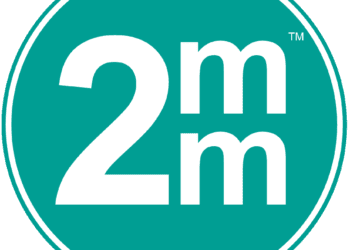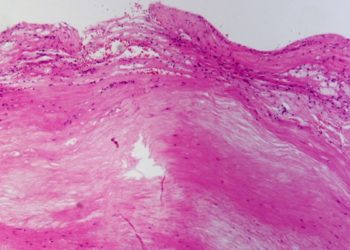CXCL13 shows potential as anti-NMDA receptor encephalitis biomarker
1. Anti-N-methyl-D-aspartate receptor (Anti-NMDAR) encephalitis is an autoimmune disorder, which can result in behavior changes, psychosis, executive dysfunction, seizures, and catatonia.
2. C-X-C motif chemokine 13 (CXCL13) is a substance that attracts B-cells, and was found to be elevated in the majority of patients with anti-NMDAR encephalitis. It may be useful as a biomarker for treatment response.
Evidence Rating Level: 2 (Good)
Study Rundown: Anti-NMDAR encephalitis is a disorder that stems from autoimmune attack on predominately the NR1 subunit of the N-methyl-D-aspartate receptor found in many neurons. It is most common in children, young adults, and women (the latter due to an association with ovarian teratomas). It can cause a multitude of symptoms, including psychosis, behavior changes, catatonia, seizures, and movement disorders. This study hypothesized that C-X-C motif chemokine 13 (CXCL13), a B-cell chemokine that may be associated with other autoimmune diseases such as multiple sclerosis and neuromyelitis optica, would be elevated in the cerebrospinal fluid of anti-NMDAR encephalitis patients.
The authors measured serum and CSF CXCL13 in patients with anti-NMDAR encephalitis, negative controls and positive controls. They found that in the early stages of disease, 70% of patients studied had elevated CSF CXCL13. The CSF concentration of CXCL13 appeared to correlate with poor response to therapy, presence of prodromal symptoms, and intrathecal synthesis of NMDAR antibodies. A secondary increase of CXCL13 was seen in the CSF of patients who had relapsing symptoms. These findings suggest that CXCL13 has clinical utility as a biomarker in this disease to detect relapse and assess response to treatment. The presence of both positive and negative control groups is a strength of this study, as is the correlation with intrathecal NMDAR-antibodies.
Click to read the study, published today in JAMA Neurology
Relevant Reading: CXCL13 is a Biomarker of Inflammation in Multiple Sclerosis, Neuromyelitis Optica, and Other Neurological Conditions
In-Depth [retrospective cohort]: This study was conducted at the University of Pennsylvania and the University of Barcelona. Cerebrospinal fluid and serum samples were examined from a total of 167 patients seen from 2008 to 2013. Inclusion criteria included an adequate number of samples per patient for study and 8 month follow-up. Twenty-five randomly selected patients with non-inflammatory neurologic conditions, such as primary psychiatric disease, epilepsy, headache disorders, and intracranial hypertension served as the negative controls for this study, and 9 patients with neuroborreliosis, which also presents with high CSF CXCL13, served as positive controls. Serum and CSF CXCL13 levels were determined by enzyme-linked immunosorbent assay (ELISA). The modified Rankin scale (mRS) was used to assess symptom burden and track clinical course.
The mean CSF CXCL13 concentration in patients with NMDAR encephalitis was 9.6 pg/mL (95%CI 7.2-12.9), compared to the negative control group at 1.4 pg/mL (95% CI 1.1-1.9). There was no significant difference in serum CXCL13 concentration between anti-NMDAR encephalitis patients and the negative control group (53.1 pg/mL vs 55.2 pg/mL with overlapping confidence intervals). About 70% of patients with early-stage anti-NMDAR encephalitis had increased CSF CXCL13 relative to controls (p<0.001). High CSF CXCL13 was associated with limited response to therapy, intrathecal NMDAR-antibody synthesis, and clinical relapse. Ten of 15 patients with limited treatment response and no relapses were found to have high CSF CXCL13 concentrations, compared with no such elevations in the group of 13 patients who had a favorable response to treatment.
More from this author: Increased orexin levels linked with poor sleep quality in Alzheimer Disease, Antibiotic prescription patterns in China may contribute to resistance, Glatiramer acetate (Copaxone) therapy may alter B cell function in multiple sclerosis
Image: PD
©2014 2 Minute Medicine, Inc. All rights reserved. No works may be reproduced without expressed written consent from 2 Minute Medicine, Inc. No article should be construed as medical advice and is not intended as such by the authors, editors, staff or by 2 Minute Medicine, Inc.






![Tumor-specific mutant antigens are potential targets for cancer therapy [PreClinical]](https://www.2minutemedicine.com/wp-content/uploads/2014/12/mouse-e1417555547919-75x75.jpg)
